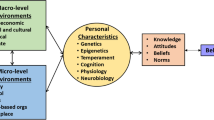Abstract
Background
HIV-positive substance dependent patients contribute disproportionally to HIV morbidity and mortality as a result of poor compliance with their HIV treatment. For HIV-positive opiate-dependent patients integrating HIV and addiction care improves HIV morbidity but the effect on addiction morbidity is not known.
Aims
This study aims to establish if integrating HIV and addiction care has a significant effect on addiction and HIV morbidity for non-engaging HIV-positive opiate-dependent patients.
Methods
Patients attending the National Drug Treatment Centre who had disengaged from their HIV treatment in St James’s Hospital were recruited to receive HIV care integrated into their methadone maintenance programme. Outcome was investigated in terms of urine toxicology (opiates, cocaine, cannabis and amphetamines); adherence to methadone; proportion receiving directly observed antiretroviral therapy; proportion HIV virally suppressed; and the CD4 cell count.
Results
No significant change in substance use or methadone adherence was demonstrated in the 19 recruited participants. There was a significant increase in the proportion receiving directly observed antiretroviral therapy, and in the CD4 cell count.
Conclusion
Integration of HIV and addiction care optimises the physical health of non-engaging HIV-positive opiate-dependent patients with no substantial effect on their methadone maintenance programme.

Similar content being viewed by others
References
Leshner AI (1997) Drug abuse and addiction treatment research. The next generation. Arch Gen Psychiatry 54(8):691–694
Brettle RP (1991) HIV and harm reduction for injection drug users. AIDS 5(2):125–136
Thompson MA, Aberg JA, Hoy JF et al (2012) Antiretroviral treatment of adult HIV infection: 2012 recommendations of the International Antiviral Society-USA panel. JAMA 308(4):387–402
Douaihy AB, Jou RJ, Gorske T et al (2003) Triple diagnosis: dual diagnosis and HIV disease, Part 1. AIDS Read 13(7):331–341
Douaihy AB, Jou RJ, Gorske TETAL (2003) Triple diagnosis: dual diagnosis and HIV disease, part 2. AIDS Read 13(8):375–382
Kuehn BM (2008) Integrated care needed for patients with HIV, drug abuse, and mental illness. JAMA 300(5):494–495
Wolfe D, Carrieri MP, Shepard D (2010) Treatment and care for injecting drug users with HIV infection: a review of barriers and ways forward. Lancet 376(9738):355–366
Bruce RD, Altice FL (2007) Clinical care of the HIV-infected drug user. Infect Dis Clin North Am 21(1):149–179 (ix)
Berg KM, Mouriz J, Li X et al (2009) Rationale, design, and sample characteristics of a randomized controlled trial of directly observed antiretroviral therapy delivered in methadone clinics. Contemp Clin Trials 30(5):481–489
Hart JE, Jeon CY, Ivers LC et al (2010) Effect of directly observed therapy for highly active antiretroviral therapy on virologic, immunologic, and adherence outcomes: a meta-analysis and systematic review. J Acquir Immune Defic Syndr 54(2):167–179
Berg KM, Litwin A, Li X et al (2011) Directly observed antiretroviral therapy improves adherence and viral load in drug users attending methadone maintenance clinics: a randomized controlled trial. Drug Alcohol Depend 113(2–3):192–199
Clarke S, Delamere S, McCullough L et al (2003) Assessing limiting factors to the acceptance of antiretroviral therapy in a large cohort of injecting drug users. HIV Med 4(1):33–37
Clarke S, Keenan E, Ryan M (2002) Directly observed antiretroviral therapy for injection drug users with HIV infection. AIDS Read 12(7):305–306
Soto TA, Bell J, Pillen MB (2004) Literature on integrated HIV care: a review. AIDS Care 16(Suppl 1):S43–S55
Sylla L, Bruce RD, Kamarulzaman A et al (2007) Integration and co-location of HIV/AIDS, tuberculosis and drug treatment services. Int J Drug Policy 18(4):306–312
The Drug Treatment Centre Board (2011) Annual Report. http://www.addictionireland.ie. Accessed 15th Oct 2013
Preston KL, Umbricht A, Epstein DH (2000) Methadone dose increase and abstinence reinforcement for treatment of continued heroin use during methadone maintenance. Arch Gen Psychiatry 57(4):395–404
Dupont WD, Plummer WD Jr (1990) Power and sample size calculations. A review and computer program. Control Clin Trials 11(2):116–128
Nahvi S, Litwin AH, Heo M et al (2012) Directly observed antiretroviral therapy eliminates adverse effects of active drug use on adherence. Drug Alcohol Depend 120(1–3):174–180
De CS, Sabate E (2003) Adherence to heroin dependence therapies and human immunodeficiency virus/acquired immunodeficiency syndrome infection rates among drug abusers. Clin Infect Dis 37(Suppl 5):S464–S467
Cohen J (1988) Statistical power analysis for the behavioral sciences. 2nd edn. Routledge
Conway B, Prasad J, Reynolds R et al (2004) Directly observed therapy for the management of HIV-infected patients in a methadone program. Clin Infect Dis 38(Suppl 5):S402–S408
Luas GM, Weidle PJ, Hader S et al (2004) Directly administered antiretroviral therapy in an urban methadone maintenance clinic: a nonrandomized comparative study. Clin Infect Dis 38(Suppl 5):S409–S4013
Ethical standards
The study was approved by the National Drug Treatment Centre Board Ethics Committee and has therefore been performed in accordance with the ethical standards laid down in the 1964 Declaration of Helsinki and its later amendments. All participants included gave informed consent.
Conflict of interest
The GUIDE clinic in St James Hospital received Grants from the Make a Difference thrust, Gliead and Janssen during the course of the study.
Author information
Authors and Affiliations
Corresponding author
Rights and permissions
About this article
Cite this article
Kinahan, J.C., Surah, S., Keating, S. et al. Effect of integrating HIV and addiction care for non-engaging HIV-infected opiate-dependent patients. Ir J Med Sci 185, 623–628 (2016). https://doi.org/10.1007/s11845-015-1319-0
Received:
Accepted:
Published:
Issue Date:
DOI: https://doi.org/10.1007/s11845-015-1319-0




